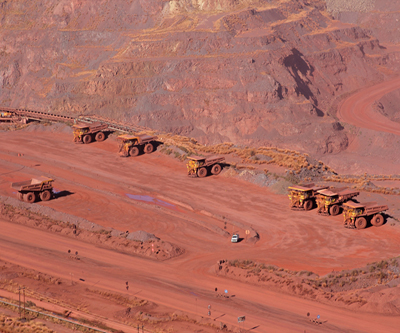
After more than two weeks moving sideways the iron ore price jumped on Thursday on the back of a seasonal pick-up demand and tight supply of high-quality lump ore.
The CFR 62% Fe 2% Al benchmark import price at the port of Qingdao tracked by The SteelIndex was pegged at $72.20 a tonne, up 2.3% on the day and the highest since November 18.
The move in the Metal Bulletin Iron Ore Index, a competing benchmark, was even more marked, with the price of 62% fines jumping $2 or 3% to $71.25.
At the top end of the quality curve the bounce in the market is the most visible as Chinese steelmakers, which consume more than two-thirds of the 1.2 billion tonne annual seaborne trade, increasingly opt for imports over domestic supply.
Because Chinese ore is of such a low quality – falling from an average above 30% to a only 21.5% iron content – the bulk of Chinese fines require a process called sintering (fines are mixed with coking coal and partially smelted) before being fed into blast furnaces.
Sintering adds to the environmental impact and costs which does not fit well with Beijing’s war on pollution and plans to eliminate overproduction in the steel sector.
China’s steelmakers have been substituting domestic supply and reducing the percentage of fines in favour of pellets and so-called “lump” ore from Australia, South Africa and South America which lowers costs and cut pollution by reducing the need for sintering.
Premiums for high-quality lump have jumped to an 11-month high tight supplies, according to Platts data.
Spot seaborne iron ore lump premiums rose to $0.285 per dry metric tonne unit on Wednesday, translating into an effective price of some $88–89 a tonne for 62% Fe.
Platts also quotes a trader as saying the lump market is in a steep backwardation, “with material stocked at Chinese ports being sold about $6/dmt higher compared with seaborne cargoes loading in December.”